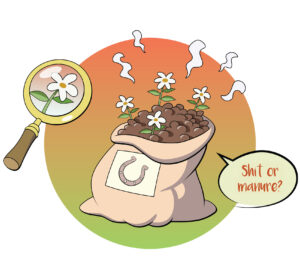How do you maintain high motivation and a positive spirit in teams? How do you help them to achieve their challenges? Before addressing these issues, let’s recall that intangibles are responsible for around 50% of the market value of companies that trade on the stockmarket. That where the answer is.
From scarcity to abundance, a paradigm shift
From Madavi, we are proposing – as always – a paradigm shift: to switch from scarcity to abundance. That is to say, “change the way we change”.
Scarcity means looking at what’s wrong with the team and the people who make it up, what’s not working, what we have to develop and learn in order to improve. That is to say, focusing on the fail grades that our child has obtained, instead of putting our emphasis on the notable and outstanding results that they have also achieved in the same evaluation.
This is what we have been used to ever since we were small, a way of seeing things that is very widespread in many organizations, and that leads nowhere.
However, the proposal that comes to us from abundance is to look at what is working; to admire the best of what is already there.
Investigate the success stories and analyze what the key factors, what the strengths are that have allowed you to achieve that success. You’ll find a different path – an injection of energy! – and with extraordinary results.
The strengths are those desirable and outstanding qualities, attitudes and skills that a person possesses. They come out in areas where you are already good, and they take you to a higher level. That’s why we say that strengths revolutionize team management.
Strengths are the things you do well and also love to do.
Here’s an exercise we propose: gather the team together and visualize all the strengths of each person. It’s incredible! You’ll become aware of all the skills you have among you and all the resources you have available in order to launch them into the change and the challenges you want to achieve. And, as well, as you have done it before, that experience will give you a lot of confidence and self-esteem.
When we understand our strengths, we can take advantage of them to consolidate the team, even to deal with a major disruption like the pandemic.
Towards a new culture based on strengths
Individualization is key to understanding the strengths of each person, and above all, it is an excellent way to ensure that each participant can focus on the mission of the organization as a whole.
Now, what it’s all about is aligning the strengths of the entire team towards the aspirations, in the sense of opportunities, and this requires a process of cultural transformation in the organization, which is the responsibility of the organization and its leaders.
Appreciative leadership
This is about simultaneously transforming the culture and the business of an organization. The premise is simple: companies grow and develop faster, when they examine what they DO have and what they DO want, instead of looking into the problems and bemoaning what they DON’T have.
To identify the strengths of a team, the important thing is to help them discover and see how they are improving the company. Here, the support of facilitators, experienced in appreciative inquiry, can be key.
The mission of the leader is to align the strengths of the organization in a way that makes weaknesses less important. This is leading appreciatively.
How do we develop this leadership? We explained it in this previous post, but you will already imagine that the development starts from abundance and simultaneity.
In short, a culture based on strengths is much more than a methodology on how to manage your team: it produces surprising results. Identifying the strengths of a team achieves a significant change in the company.
In addition, this change methodology allows you to be more aware of your strengths, which will be of great help to you both in your professional and personal life.



